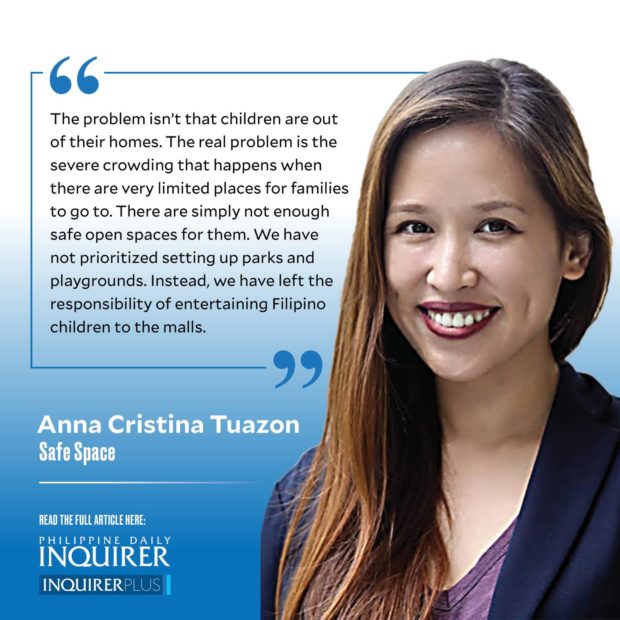Can we be both happy and safe?
There is a fine line between keeping safe and valuing our wellbeing. Since announcing that the National Capital Region has gone down to alert level 2, malls and other establishments have welcomed back children through their doors. The first few pictures were a welcome sight, similar to the later scenes in the 1968 Dick Van Dyke movie “Chitty Chitty Bang Bang” where children were finally allowed to go out and be free, after years of being locked and in hiding. However, reports of severe crowding, lack of social distancing, and uneven wearing of safety gear have alarmed others, particularly in the health sector who are bracing themselves for a spike in pediatric cases. I saw a lot of social media posts blaming the parents, throwing insults at them.
Is it possible to allow children to play outside and still ensure the safety of everyone? I still strongly say yes. There is a false dilemma here that the only way to secure safety is to keep children home. Letting go of this false dilemma will allow us to see other options that will provide both safety and optimal development for our children. I firmly believe that there is a way to let children receive their “full sun”—being able to play outdoors, socialize with peers, and receive stimulation from their environment—without it turning into a public health hazard.
First, we need to define the problem accurately. The problem isn’t that children are out of their homes. The real problem is the severe crowding that happens when there are very limited places for families to go to. There are simply not enough safe open spaces for them. We have not prioritized setting up parks and playgrounds. Instead, we have left the responsibility of entertaining Filipino children to the malls. By the time the pandemic hit, where else can people go to entertain their kids who have been stuck at home for more than a year? What happened in the last few days is like someone who was allowed to go off of a severe two-year deprivation diet and the only available food is junk food. Of course, people are going to binge and have less control over their behavior. That’s what deprivation does. Don’t blame the binge; blame the deprivation.
When there is a lack of safe open spaces, acquiring access to this becomes a privilege. Not everyone has a private yard, balcony, or garden. Not everyone has a safe, outdoor play area within their communities. A lot of people don’t even have safe streets for their children to play in. Certainly not all families can afford to travel to Baguio or Tagaytay and make reservations to safe spaces. Not everyone has memberships to golf courses and country clubs to entertain their families. Shaming parents who take their kids to the very few free spaces available is essentially shaming them for not having enough resources to keep safe. We should be appalled that there is not enough equitable access to safe open spaces instead of blaming parents for daring to bring their kids out.
In behavior management, I strongly advise parents to avoid saying “don’t.” Instead, provide alternatives. The same goes for public health issues. Instead of telling parents not to take their kids to the mall, provide them with safe alternatives instead. The Department of Tourism should promote child-friendly outdoor spaces and venues, and ensure that these institutions have ways to enforce proper social distancing and safety. We can institute social distancing mechanisms, such as having designated picnic areas or play areas with a free reservation system to prevent crowding. We can promote self-guided urban/rural trails and walking tours to prevent people from staying in one place for too long. Ironically, organized events can increase proper social distancing as organizers can set up rules and facilitate a safe flow of people.
We also have not yet formally prepared children on how to keep safe outside, since they have mostly been kept at home. Just like how the Metropolitan Manila Development Authority built a road safety park to teach children how to safely cross the street, we should provide creative ways to teach them how to keep safe in a pandemic. Venues and establishments can put up child-friendly posters and videos to orient kids on safety rules. There can be mini-orientation “classes” to teach them proper ways to enjoy the facilities, similar to recreational venues.
We shouldn’t disregard children’s development and happiness for the sake of safety. Good safety protocols shouldn’t deprive but instead find ways for children (and adults!) to pursue happiness in a safe environment.





















